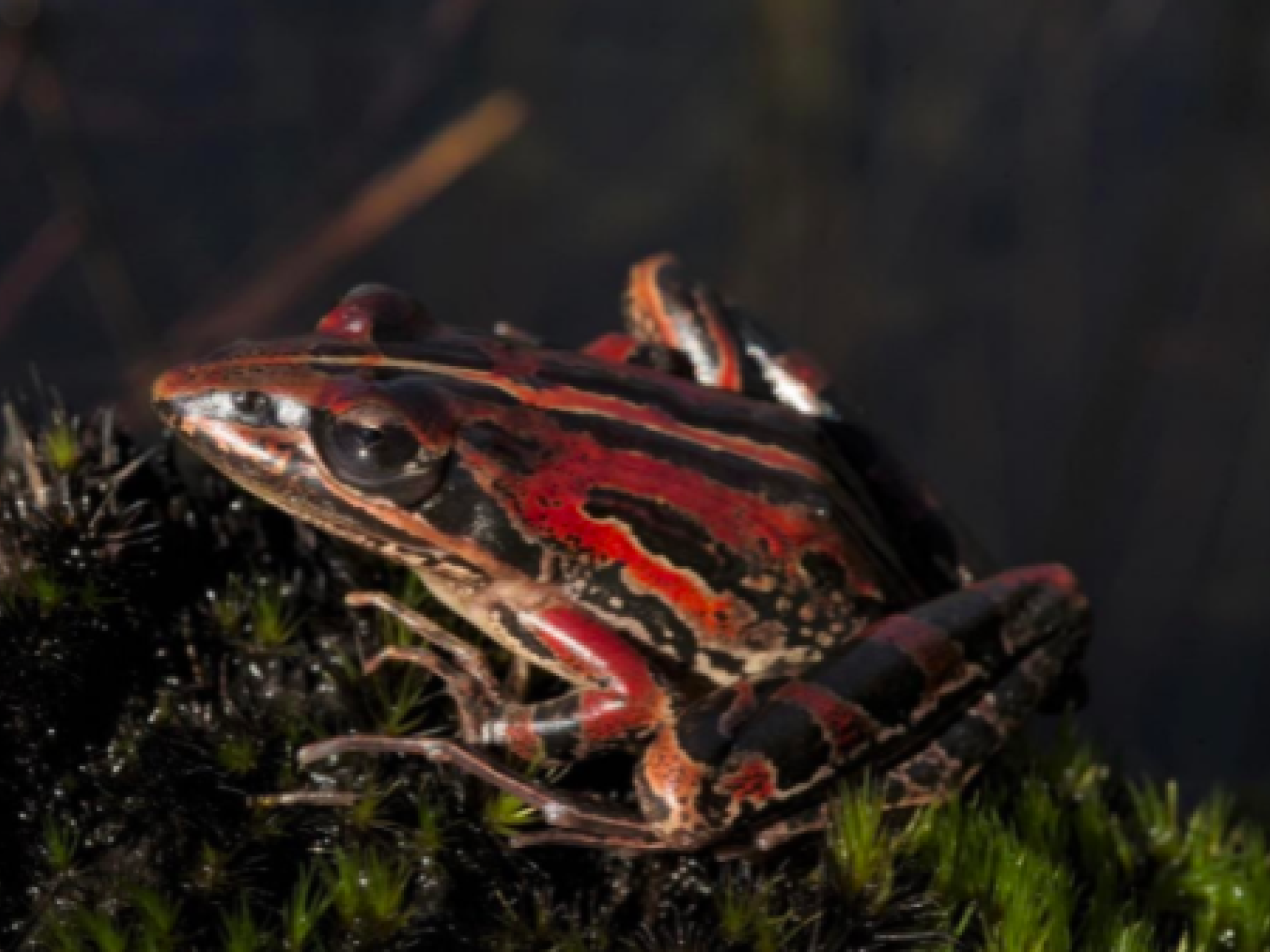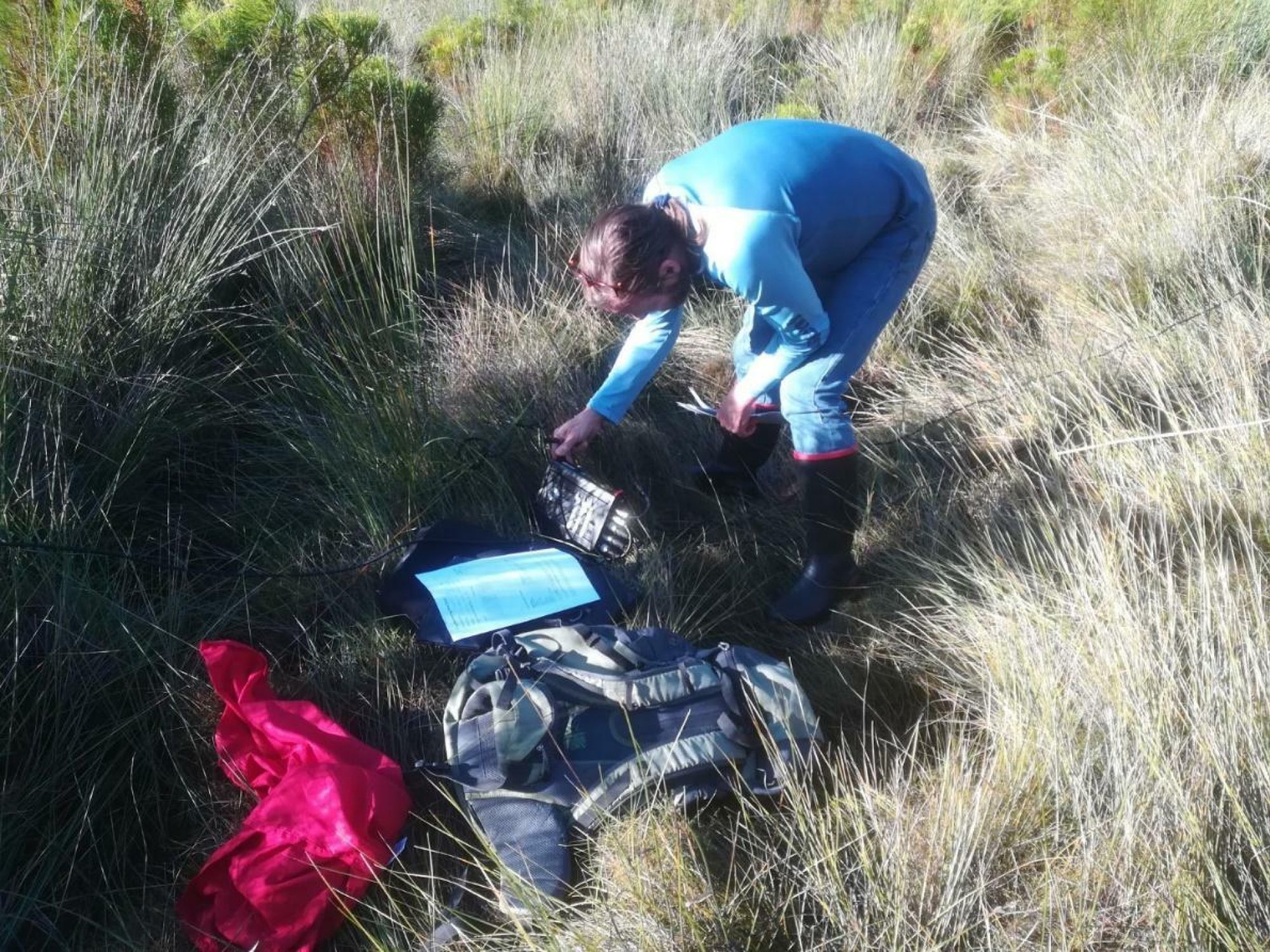Ecological monitoring
Ecological monitoring is an extremely important part of CapeNature’s conservation work. CapeNature’s ongoing frog monitoring projects, for example, have been in place for almost two decades.
These projects focus mainly on moss frogs (genus Arthroleptella) in order to provide data on population status and geographical distributions for conservation status assessments. Furthermore, these projects also serve to monitor the response of these and other frog species to environmental threats such as climate change, and shorter-term impacts such as increased fire frequency.

A banded stream frog, Strongylopus bonaespei, at Landdroskop. (Photo: Dr Andrew Turner)
Ecological monitoring is an extremely important part of CapeNature’s conservation work. CapeNature’s ongoing frog monitoring projects, for example, have been in place for almost two decades. These projects focus mainly on moss frogs (genus Arthroleptella) in order to provide data on population status and geographical distributions for conservation status assessments. These projects also serve to monitor the response of these and other frog species to environmental threats such as climate change, and shorter-term impacts such as increased fire frequency.
Given the relatively small size of most frogs (especially moss frogs that are about the size of a R5 coin), they are extremely difficult to find in the fynbos habitat they occupy. They are identified mainly through the presence or absence of calls. In the case of less cryptic species, such as the banded stream frog, Strongylopus bonaespei, physical specimens and the presence of tadpoles are recorded. The relative abundance of all frog species are estimated by recording calling density and counting the number of calling individuals. While this is mostly done by finely trained human ear, technology can also be used to do abundance estimates. This is done by setting up a microphone array and recording the calls, which are then analysed by computer software.

Setting up microphone arrays for recording calls to inform density estimations.
Freshwater fish monitoring
Freshwater fish is the most threatened vertebrate group in the province, yet can be challenging to sample, as fish do not lend themselves to easy observation. Surveying fish depends on the habitat of the survey area and can include an array of sampling methods, such as through netting, electrofishing, underwater cameras or snorkel surveys.
The latter two sampling methods are well suited to species that typically inhabit clear headwater streams such as the Cape galaxias, Galaxias zebratus, or the slender redfin, Pseudobarbus tenuis. Bigger mainstream rivers are generally sampled using various types of nets and electrofishing and typically larger species are sampled such as Clanwilliam yellowfish or moggel (Labeo umbratus).
Monitoring endpoints include species diversity, relative abundance and size class distribution (different size classes indicate successful breeding activity). The presence and extent of threats are recorded during monitoring so that conservation status assessments and interventions can be made based on this information. Threats to freshwater fish include invasive fish, loss of habitat and pollution.